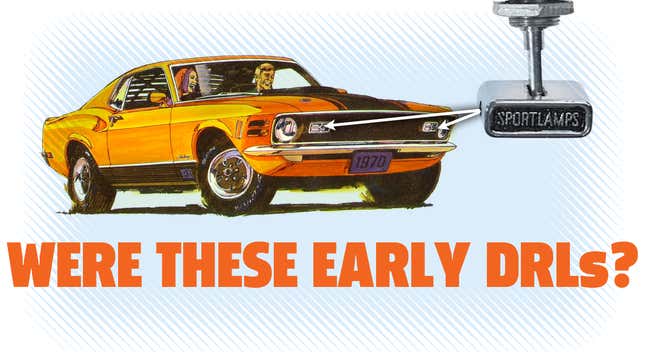
The most recent major innovation in the automotive lighting universe is likely modernity’s near-ubiquity of daytime running lamps on cars. They’ve actually been around in various forms for a long time, and while they’re not legally required in America yet, they’ve been required in Canada since 1989 and even earlier in often-dark Scandinavian countries, starting with Finland in 1972. Surprisingly, I think Ford may have inadvertently stumbled onto DRLs as early as 1970, though they had no idea they did.
I suppose technically the Saab 99 from 1968 had the first intentional DRLs, where a fuse was used to make them operable for cars in (primarily) Scandinavian markets.
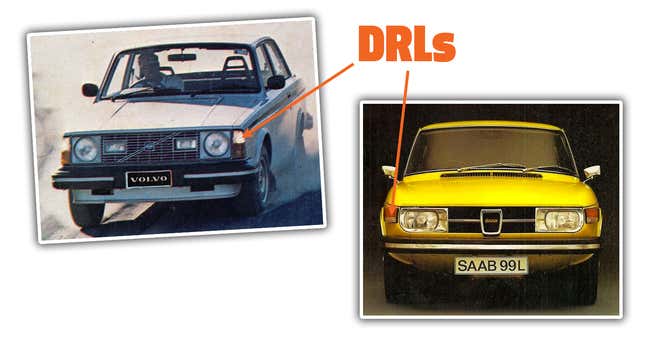
These DRLs used the clear front position lamps, as did the Volvo 240 from 1972 — at least in European markets. That actually brings up a good point that probably needs clarifying: How do DRLs differ from parking lamps?
You know parking lamps — called “position lamps” outside of the U.S. or maybe “sidelights” in the U.K., right? They’re that first position on most car headlight switches, and they light up pretty much everything but the actual headlights: side markers, taillights, front parking lights (these could be the both turn indicators on, or a separate set of often-clear lamps), and the instrument lights.
DRLs are different — they’re just in the front, and they don’t illuminate anything else. They’re usually white light but could be amber, too. Because they’re only at the front, and because modern LEDs are so bright and LCD dashboards are illuminated all the time, this has caused a rise in people driving around at night with their actual headlights off — an issue we’ve discussed before.
The idea of DRLs is not to actually throw light to see the road better — it’s daylight, after all — but to make your car more easily seen, especially in lower-light or obscured light conditions. Sure, those Swedes suffering from Seasonal Affective Disorder may have come up with it first, but right on their heels was Ford, which essentially developed the exact same system, but for a much more frivolous reason.
That reason? Ford thought they looked cool.
The lights Ford developed were first used on 1970 Maverick Grabbers and Mustang Mach Is and were called “Sport Lamps.” They looked like this:
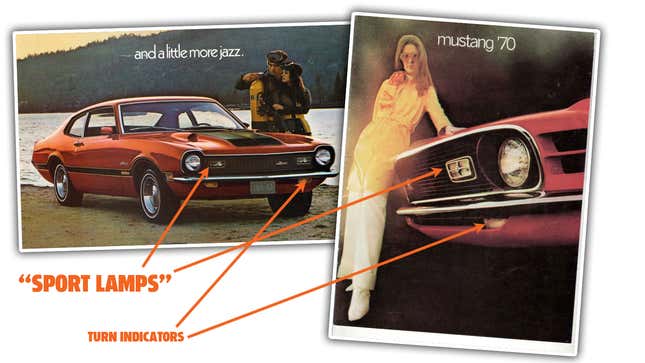
Now, you’d be forgiven for thinking that they were some sort of fog or driving lamp, because that’s what they look like. But they’re really not. What they really are is (are? Should I do two “ares” in a row there? That sounds weird) turn indicators from the 1969 Mercury Cougar:
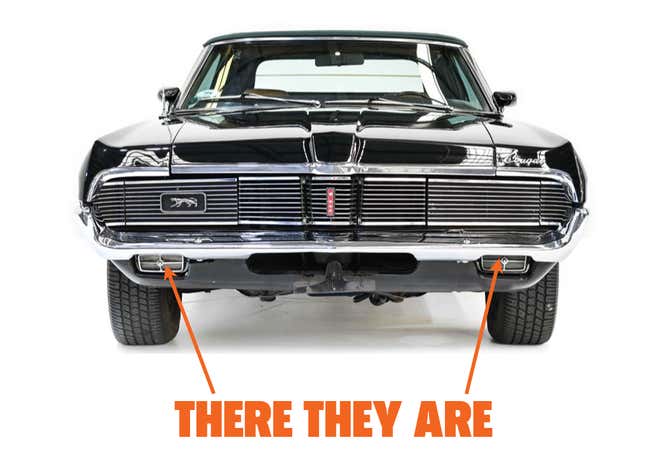
They’re the exact same turn signal units, just moved up and stuck on the grille of the Maverick and Mustang. They don’t replace the stock turn indicators, which on both cars remain strange little demure things that hide under the fenders, all shy. You can see them here on a base model Maverick:
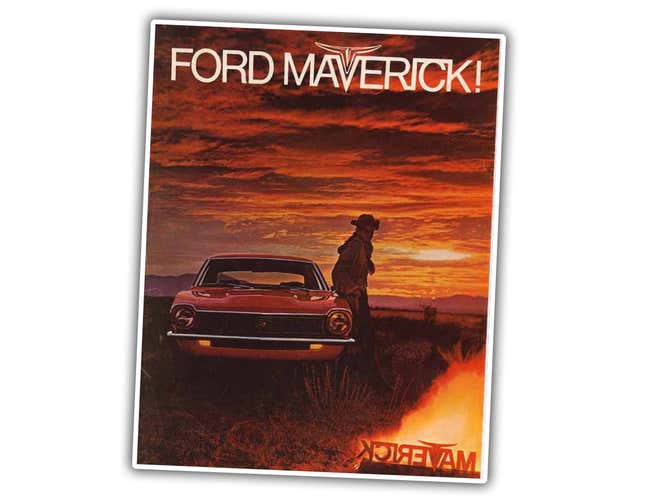
The Sport Lamps, being re-purposed turn indicators, even used the exact same amber dual-filament 1157 bulbs as when they were doing turn signaling work on the Cougar, but in Sport Lamp context, they just illuminated the brighter filament:
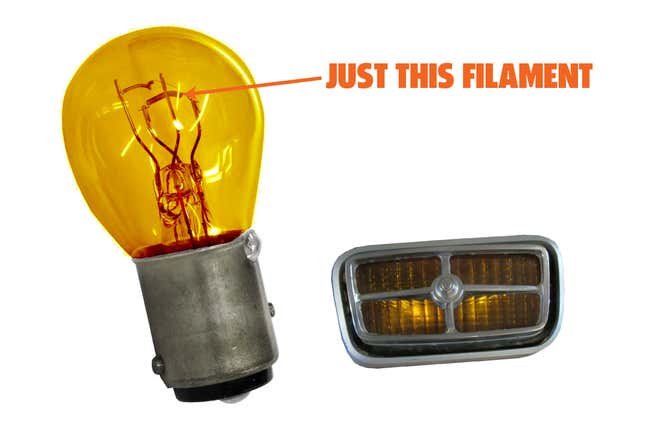
The socket wouldn’t accept a one-filament bulb, so that extra filament was just dormant. And even though the brighter filament was used, it’s not like these ever threw out much light; you wouldn’t use these to cut through fog or see further on a dark road. You’d turn these on because, well, you thought they looked kinda cool.
And, maybe they did? Sure, they’re mostly just a silly bit of light-up sporty car-jewelry, but the way they actually functioned — only up front, serving to make the car more visible — was exactly the same as what DRLs do.
Those safety-conscious Swedes at Saab that did studies and conducted experiments and put in a lot of somber brainpower came up with a solution that involved lighting up small 12V bulbs at the front of the car — the exact same thing Ford came up with to look a little more badass. And while Ford was a couple years behind Saab, I’m pretty sure there were no Mach I engineers looking over at what Saab was doing with the 99 in some Northern European markets, so I think they arrived at the same place independently and beat Volvo there in the process.
Without realizing it, Ford became a DRL pioneer. They just were too busy looking cool to care.
(thanks, Hans!)